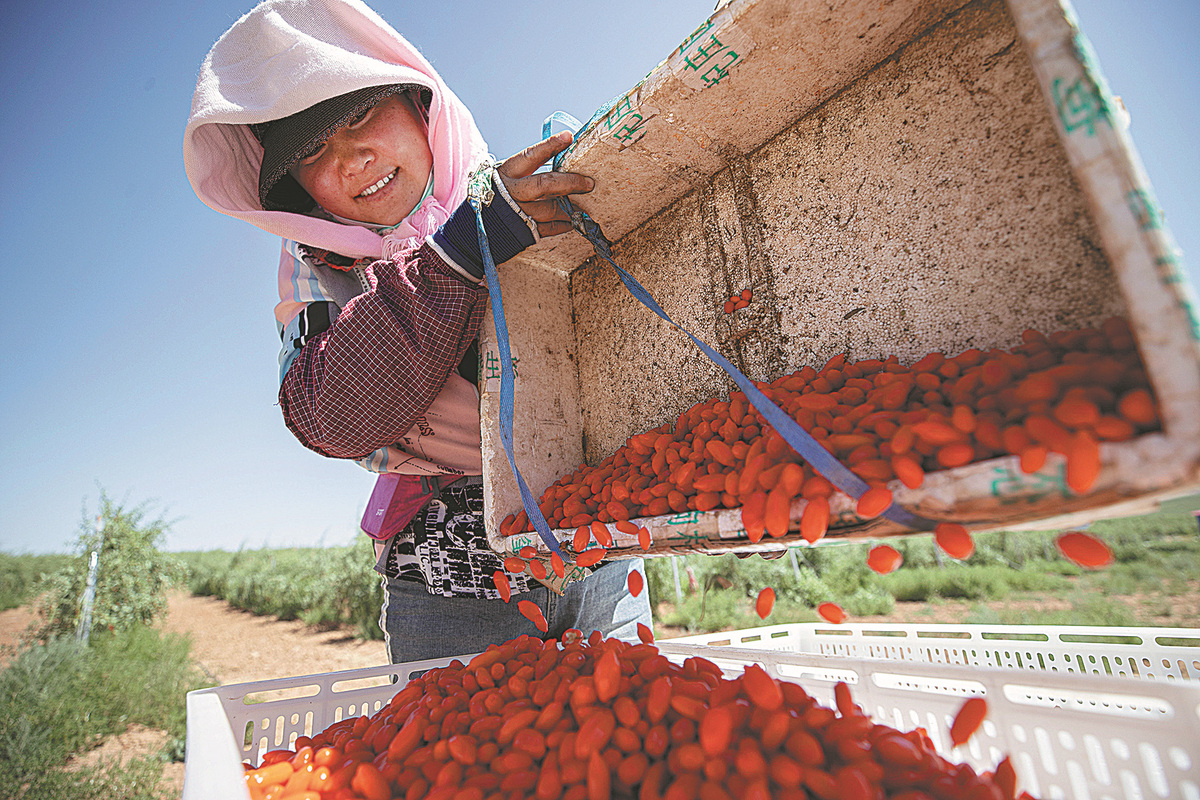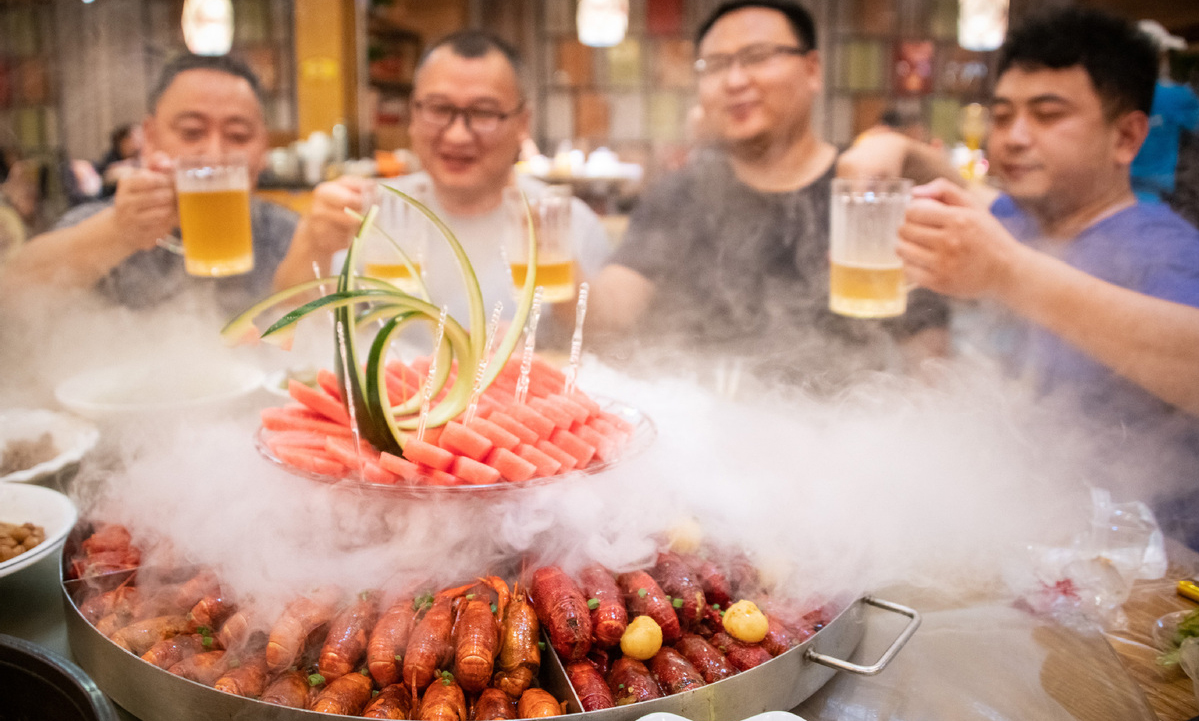Upgrades help goji berries lift people out of poverty in Ningxia

A farmer weighs goji berries at a plantation in Zhongning, Ningxia Hui autonomous region, this month. [Photo/Xinhua]
The goji berry industry, which has lifted many people out of poverty in Northwest China's Ningxia Hui autonomous region, has been undergoing a series of upgrades to boost economic development in Zhongning county, its original production base.
As farmers were busy harvesting the year's first batch of goji berries in Zhongning last month, workers on the production line were preparing to process fresh berries into other products such as juices, facial creams and cosmetics.
Cao Youlong, a goji expert who works at the Ningxia Academy of Agriculture and Forestry Sciences, said Zhongning is a suitable area for growing goji thanks to its plentiful sunshine, little rainfall and rich organic matter in the soil.
"Located at 37 degrees north latitude, Zhongning is the prime location for the growth of goji berries. We have been increasing the cultivation of the berries since ancient times," Cao said, adding that excellent varieties have been developed in recent years.
So far, more than 12,000 hectares of goji have been planted in the county. As a pillar industry, the output value of the sector has reached 12 billion yuan ($1.8 billion) while the regional brand is worth 19 billion yuan, according to He Weilong, deputy head of the county.
About 120,000 people work in more than 120 companies that process and sell the fruit. These companies are responsible for more than 60 percent of local farmers' income.
Zhongning resident Kong Lixia has been working at a goji processing company for four years.
She earns 120 yuan per day for performing tasks such as drying goji berries and selecting dried fruits, and 200 yuan per day for picking fresh berries during the harvest season in June and July.
"Goji has contributed to the economic development of Ningxia and improved local people's livelihood," Kong said.
Deputy head He said the county has been upgrading the goji industry through science and technology innovation to improve its high-end products.
The Ningxia Zhongning Goji Industry Innovation Research Institute was established in 2018 to promote the high-quality development of the goji industry. With help from eight academicians from the Chinese Academy of Sciences and the Chinese Academy of Engineering, the institute conducts research and development on goji products.
Meanwhile, related companies are also innovating. Ningxia Zaokang Goji, for example, has developed a new technique to freeze goji berries in order to produce dried fruit. After being cleaned, fresh berries are quickly frozen in a vacuum with temperatures ranging between-30 and-40 C, so that the water in the fruit is directly turned into ice.
The technique ensures that the material structure of the fresh goji is completely preserved and that its nutrients are retained, the company said.
Goji berries can also be made into wines, juices and even lipsticks. Facial creams and masks are also among consumers' favorite goji products.
In recent years, Zhongning has been developing goji industrial tours, which allow visitors to see how the products are made in factories, as a way of integrating goji production with the tourism industry.
The county has also held the Goji Industry Expo for the past five years and the first goji cultural festival, with 15 cultural and sightseeing bases being built in the county to promote goji-related tourism.
The nutrients in goji berries are functional in resisting aging, protecting vision, treating depression and preventing Alzheimer's, experts said at the expo, which was held in Ningxia in late June.
More than 10 countries and regions, including South Korea and Serbia, have participated in the event. Cai Baoqiang, chairman of the Association of Belt and Road Malaysia, said Ningxia goji will have greater influence in the global market and provide opportunities for Malaysian buyers of Chinese herbal medicine.
Photos
Related Stories
- UNDP: Cost-of-living crisis has plunged 71 million people into poverty
- Interview: China's fight against poverty creates pathway for developing nations: Nigerian expert
- How will China consolidate poverty alleviation feats?
- China to boost employment of people emerging from poverty
- Rural women in revolutionary base fight poverty
Copyright © 2022 People's Daily Online. All Rights Reserved.









